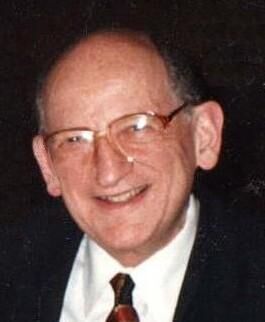Psychology
Major Psychodynamic Paradigms: The Basics
A brief overview of ego psychology, object relations, and self psychology.
Posted July 19, 2020 Reviewed by Jessica Schrader
"Words are, of course, the most powerful drug used by mankind." –Rudyard Kipling
To the trainee or beginning psychotherapist, psychodynamic theory is often seen as a daunting, obscure paradigm with a language all its own. The sheer density of psychoanalytic writing often intimidates younger therapists who might otherwise find great value in the approach.

Indeed, what we call psychodynamic or psychoanalytic theory (I use the terms interchangeably) is really a grouping of various different theoretical paradigms, each possessing its own conceptual framework, terminology, and method of working with patients. The theories comprising "psychoanalysis" are as varied as the personalities of their founders—Freud, Sullivan, Winnicott, Klein, Kohut, Kernberg, and others.
This post briefly outlines the three major theories comprising psychoanalysis at the present day: ego psychology, object relations theory, and self psychology. It is written primarily for the younger therapist or student who has interest in the psychoanalytic approach, but it is by no means a comprehensive outline of contemporary psychoanalysis. The field is broad and continues to expand in exciting new directions, such as the recent focus on neuropsychoanalysis.
Before we continue to the major theoretical paradigms, let us first briefly describe a few ideas that unify all of psychoanalysis and differentiate it from other forms of psychotherapy.
All psychoanalytic theories rest on a belief in the existence of an unconscious part of our minds that motivates human behavior and causes, in certain instances, emotional-psychological distress. Also central to the psychoanalytic approach is a belief in psychic determinism, the idea that mental events, like physical events, cannot logically be separated from the events that preceded them. Thus, nothing in human mental life "happens by chance." A third unifying factor is the centrality of the patient-therapist relationship and the understanding of the transference.
I contend that another tenet that binds all of psychoanalysis and distinguishes it from other therapies is the psychoanalyst's preservation of the autonomy of the patient (see Ruffalo, 2019). Now that we have discussed some unifying factors, let us move on to the major psychodynamic paradigms.
Ego Psychology
Ego psychology is what most undergraduate students learn about psychoanalysis in introductory psychology courses. It is the classic theory that earned psychoanalysis honor and prestige, particularly in the United States. It reached its zenith in the 1950s and 1960s when it was espoused by psychoanalytic giants like Heinz Hartmann and Charles Brenner (see Brenner, 1955, for a classic introduction to the ego psychology framework written in its heyday).
In ego psychology, the mind is comprised of warring factions—the sexual and aggressive drives—and reactions to these drives coming from the conscience, or superego. The ego attempts to arbitrate and make compromises between the drives seeking expression, the conscience, and the demands of reality. To deal with this conflict, the mind employs defense mechanisms, such as repression, displacement, and sublimation, to alleviate anxiety and manage these ostensibly clashing internal needs. When defense mechanisms become inadequate, or when certain pathological defenses are employed, psychiatric symptoms result.
Ego psychology also places emphasis on psychosexual development. The predictable unfolding of the sexual and aggressive impulses in childhood represent developmental challenges that must be addressed and resolved to avoid long-term psychological harm.
Object Relations Theory
The second major psychoanalytic framework is object relations theory, developed largely between the 1930s and 1950s and becoming prominent in American psychoanalysis in the decades thereafter. Object relations theory sees human relationships, and the great satisfaction and disappointment they bring, as being of central importance in human psychology. The object relations movement was supported by research in the realm of attachment theory in the 1950s by the likes of Harry Harlowe and John Bowlby.
Whereas the ego psychologist places emphasis on instinctual drives toward sex and war, the object relations psychologist emphasizes the primacy of the need for closeness and relationship. The word "object" is an unfortunately cold-sounding term for what really is a warm and well-organized theory of psychotherapy, focused on the patient's early experiences with parents and caregivers and how those relationships are internalized and replayed throughout life.
Also central to the object relations approach is the development of a stable representation of self. When this developmental milestone is not achieved, psychopathology results, as Kernberg has demonstrated in his pioneering work on the narcissistic and borderline personality disorders.
My friend, William S. Meyer, L.C.S.W., an associate professor of psychiatry and obstetrics and gynecology at Duke University, beautifully captures the essence of psychotherapy from an object relations perspective when he writes, "The ideal treatment for people who have been failed by human relationships is an enduring human relationship that does not fail" (Meyer, 1993).
Self Psychology
Developed originally as an offshoot of object relations theory by the psychiatrist Heinz Kohut in Chicago, self psychology represents the newest of the three major psychodynamic paradigms. Self psychology is so named because of its recognition that the suffering in some patients is rooted in problems with self-esteem regulation and maintaining a solid, cohesive sense of self.
Kohut defined a new term, selfobject, as an ideal relationship between parent and child in which there is optimal empathy and validation. For Kohut, narcissism develops when there is not enough selfobject function. Thus, much of the literature in psychoanalytic self psychology focuses on the problem of narcissism, a condition once considered largely unamenable to traditional psychoanalysis. To self psychologists, early problems with selfobjects make it harder to perform the selfobject function with others in later life.
Since its development in the 1970s, self psychology has been applied to the understanding of a range of mental conditions, from personality disorders to depression to psychosomatic illness and more. It is a theory that continues to be expanded and refined.
Conclusion
Contemporary psychoanalysis is comprised of many theoretical frameworks, including those of ego psychology, object relations theory, and self psychology. Many other theories exist, and it is now commonly encouraged that psychoanalytic trainees gain exposure to the range of psychodynamic paradigms rather than limiting themselves to a single theoretical model.
References
Brenner, C. (1955). An elementary textbook of psychoanalysis. Anchor.
Meyer, W. S. (1993). In defense of long-term treatment: On the vanishing holding environment. Social Work, 38(5), 571-578.
Ruffalo, M. L. (2019). Freedom, choice, and psychoanalysis. Psychology Today. https://www.psychologytoday.com/us/blog/freud-fluoxetine/201909/freedom…
Summers, R. F., & Barber, J. P. (2010). Psychodynamic therapy: A guide to evidence-based practice. Guilford Press.




